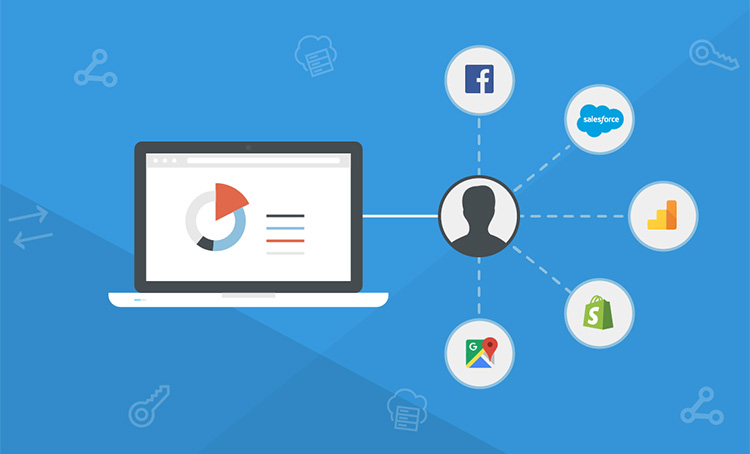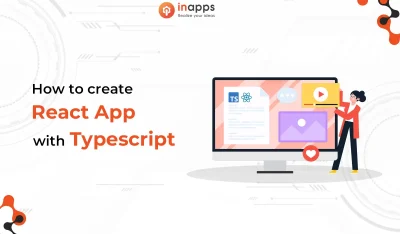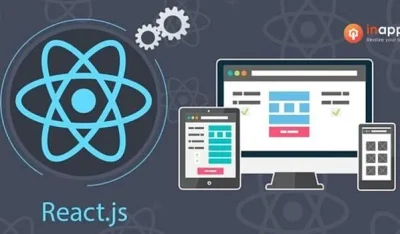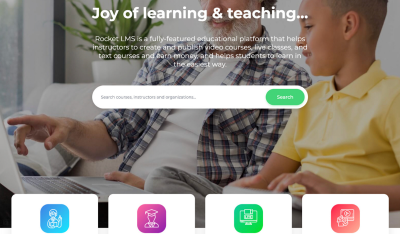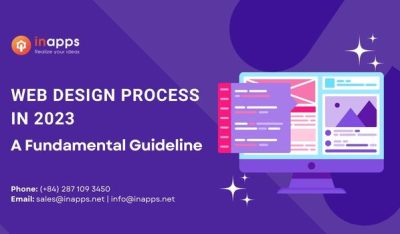- Home
- >
- Web Design & Development
- >
- 5 APIs You Need On Your Website – update 2022
Do you remember that there used to be a time when if your client asked for a specific set of features, it would leave you wondering as to how you could complete the task or if it’s even possible to do it manually without it consuming a lot of time? Well, that issue has been taken care of now! With application programming interfaces (API), things have definitely gotten super easy.
An Application Programming Interface (API) is a collection of rules and requirements that software applications can use to interact or “interface” with one another. There are thousands of APIs available for practically anything you might want online. Some are superior to others, and some are unquestionably more beneficial.
An API establishes a link between your website and an application, allowing you to access its data or functionality. This enables you to improve not just the on-site experience, but also to optimize a number of operations that would otherwise necessitate a lot of time-consuming tasks in the backend. Many of you are presumably already acquainted with Google’s plethora of APIs.Could Read this Article ” To learn Inside Out Of Api“.
However, Google isn’t the only one attempting to make life simpler for web developers and designers to build stunning online experiences, there are many other APIs in the market. In this post, we will be discussing the 5 APIs you need on your website. But before starting that, why do we even need APIs?
What is the need for APIs?
By allowing interactions between programs, APIs have totally revolutionized how we utilize mobile and web applications. APIs are the essential integration point in today’s technology, and you’ll almost certainly find one for anything. If it isn’t there yet, rest assured that it is being developed elsewhere. But, before we go any further, let’s have a look at why we even need them.
It is going to grow and get better
Only a few people would have predicted that we’d be where we are now, with millions of programs in the app store with billions of downloads exceeding what he had on desktop or PCs.
By focusing on your API first, you eliminate the complexities of what links to it. It may be a web browser, a smartphone app, or even things that we wouldn’t consider internet-worthy today. If you merely glance at a website, your sight will be limited to a fraction of the direct correlations, limiting your usability.
Business issues are different from UI concerns
Another advantage of focusing on an API rather than a website is that business problems are prioritized above UI issues. Clearly, a website should consider how users will interact with it, including how it appears and which pages lead to which important concerns. An API is free to set up on a more fundamental level, expressing merely the issues about how different parts of the business work.
This implies you may make changes to front-end technology without affecting the underlying business code. For example, you could have a customer facing online front end and a separate internal mobile app. Two apps with separate flows and user experiences, but a consistent and easier-to-maintain base of code at the API.
Also Read | Guide To WordPress Plugin Development
It allows simple and clean testing
You may directly test the underlying requests by separating away user-facing technology and concentrating on the API. Writing automated code to communicate with an API is significantly easier than writing code to interface with a website.
It also enables for separate testing of modifications. Assume you are required to replace the database architecture of an API with that of a website. You may switch the server, run the tests, and repair failures until you’re green if your API has completely automated testing.
Security issues are taken care of
One of the most important issues of any internet-facing company is security. Insecurities are caused by bugs, which is maybe a specific example of the prior argument. It’s a key problem that may have far-reaching consequences for your company. Having a more readily testable, auditable, and reusable API is undoubtedly advantageous.
However, concentrating on APIs provides extra security benefits. You can use an API to separate the levels of your app. When the user interface is intimately linked to fundamental functions, a slew of security vulnerabilities might arise.
5 APIs: The List
Now that we got an idea of why we even need APIs, let us have a look at the APIs You Need On Your Website, shall we?
1. ipapi
ipapi was introduced as part of an internal IP address validation and lookup tool that powered the back-end of a small number of websites in 2013. The API was entirely redesigned and optimized once the service has proven to be dependable and extensible over a long period, allowing for full market exposure. Today, ipapi is assisting over 30.000 organizations across the world in gaining control of their audience and delivering user experiences at unprecedented performance and accuracy.

Users can check up numerous bits of information linked with IPv4 and IPv6 addresses using a simple & convenient API interface provided by ipapi. The API offers over 45 distinct data points for each IP address analyzed, including location data, connection data, ISP information, time zone, currency, and security assessment data.
The API is REST-based, which means that lookup requests are performed using simple HTTP GET URLs, and findings are provided in lightweight JSON or XML format in just a few milliseconds.
2. Currency Layer
Currencylayer is an easy REST API that delivers real-time and past exchange rates for 168 global currencies, as well as currency pairs in globally useable JSON format that can be used in any of your applications.
Data on spot exchange rates are received in real-time from various big forex data suppliers, verified, analyzed, and given hourly, every 10 minutes, or even inside the 60-second market window.

The currencylayer API enables currency converters, mobile applications, financial software components, and back-office systems all over the world by offering the most accurate forex market value available (“midpoint” value) for every API request.
3. Medistack
Mediastack began as a sports news aggregation feed in 2017 and has since expanded to become one of the most prominent platforms with news data, continuously providing hundreds of relevant news and blog pieces every day. Data is gathered from over 7,500 globally famous media outlets, standardized, and delivered in an easy-to-use JSON format for the programmatic application.

Currently, mediastack is the go-to news data source for over 2,000 delighted organizations all around the globe, providing live news sites, data analytics systems, and trend analysis apps. The mediastack API was created to give a robust, comprehensive, yet simple-to-use REST API interface that delivers global live and historical news data in JSON format. The API includes a single news HTTP GET endpoint as well as a set of constraints and options for filtering your news data results. You may filter by dates and timeframes, nations, languages, sources, and search phrases, among other things.
4. Userstack
The first edition of Userstack, then known as UserAgent API, was released in early 2014, into a market where there were few User-Agent detection cloud APIs. Soon after, it became evident that developers and businesses from all over the world would be interested in using the platform, prompting continued development and refinement of the product, culminating in its rebranding as userstack.

userstack provides a simple and basic REST API interface that parses User-Agent strings to reliably detect device, browser, and OS information in real-time. Integrating the JSON/XML API in your frontend or backend system will provide you with all of the resources you need to govern the customer experience and their journey on your website or application.
5. Mailboxlayer
Mailboxlayer provides an easy-to-use REST-based JSON API that allows you to carefully examine and validate email addresses at the input time.

The Mailboxlayer API is connected to a range of regularly updated databases that has available email providers, which streamlines the separation of duties. It checks the syntax, the real occurrence of an email address using MX-Records and the Simple Mail Transfer Protocol (SMTP), and detects whether or not the desired mailbox is provisioned to capture all incoming mail traffic.
Some Other APIs You Need For Your Website
1. Google Maps
Google Maps may be the most significant API driving the emergence of publicly available APIs. A countless number of websites now use Google’s geographic service, which is slowly becoming your go-to API for integrating location maps. When you combine its widespread use with the advent of mobile, it becomes an essential component of any developer’s toolkit.

Pointing out places, like local searches, like dots on a map is a simple use case. You can also create pathways that connect many places. More complex usage generates interplay between frontend code and the map, such as when you click a search term and the location is highlighted on the map.
Also Read | How To Integrate Service Worker And Next.Js
2. Stormpath
Will your website be holding any kind of registration? Stormpath is a safe user management API that includes Facebook login functionality. It tends to make sense to develop on top of Stormpath instead of trying to keep up with the rapidly evolving social API ecosystem if you’re using just a social network for authentication. It keeps track of user-profiles, assigns authorization roles, and manages the flow of lost passwords.

Facebook, Google, LinkedIn, and GitHub are all supported by Stormpath. Try OAuth.io, which collaborates with Stormpath for non-login features and supports Twitter.
3. Slack
Within companies, collaboration has always been crucial, but more distant workplaces are driving the tools and processes online. Slack, the 2015 Game Changer of the Year on the internet, has quickly become the most renowned platform for business communication and knowledge, and file-sharing.

You may like to be able to develop code against whichever tool is at the heart of your collaboration. Slack has a few built-in integrations, such as GitHub and Travis, but it also includes an API that you can use to build your own apps. You can use bots to send messages, wait for real-time events, and retrieve channel history and files. You can also integrate the build and deploy workflow into Slack to keep everyone in the loop.
4. Stripe
Stripe has become extremely powerful and is slowly looking like the only way to go if you want to accept payments. Concise, accessible, and responsive documentation leads to remarkable levels of adoption, according to the startup.

Although PayPal’s Braintree has made significant improvements, if you’ve already decided on Stripe, you should devote a half-day (or less) to learning its API. Stripe offers a basic use case at its core: accepting payments from clients. The API opens up a whole new world of possibilities. You’ll be able to speed up conversations and customer onboarding with its webhooks (and off-boarding).
5. Dropbox
The location of your files may differ from the location of your users’ files. Dropbox‘s servers synchronize files for over 400 million customers, enabling it to be an ideal API for file access. With customers switching devices, it’s much more possible that a file already exists in Dropbox than on the computer or other device on which they’re using your software – link to their Dropbox account to avoid file upload.
Trending Article | Low Code vs No Code : Which Is better?

Image gallery services, static site hosting, and simple Dropbox file upload alternatives have all been established by developers. Choose Dropbox for Business or Dropbox’s competitor Box if you’re looking for enterprise-focused solutions.
In A Nutshell…
The 5 APIs that we mentioned basically address the essentials you’ll need when creating a website and including all of the functionality your customers want. However, there are a plethora of other APIs you can use. Codersera aspires to keep you updated with the latest trends and information in the tech world. Don’t miss out on these!
Source: InApps.net
Let’s create the next big thing together!
Coming together is a beginning. Keeping together is progress. Working together is success.




